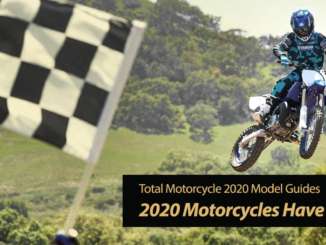
Don’t stop, keep moving… that’s the single most important piece of advice for anyone considering riding the infamous El Camino de la Muerte or ‘Road of Death’.
Climbing to 4,600 metres and riding for long stretches on roads less than three metres wide, with downhill-driving cars and trucks perching on the edge of the abyss to give way, it’s not a route for the faint-hearted.
If it’s sheer unadulterated adrenaline you’re after, then this 65km road linking La Paz and Coroico in Bolivia – widely regarded as the world’s most dangerous – is a highlight of any trip through the Andes. The first 20km through the longest continental mountain range in the world is on tarmac and fairly comfortable. But it’s the climb to the start of the Old Road where things get interesting, as riders pierce the clouds, pass through lush jungle, past huge waterfalls and cocoa fields before reaching the village of Yolosa at 1,100m and a well-earned drink.
“It’s officially the most dangerous road in the world, mainly single carriageway without guard rails, so slow and steady is definitely the watchword here,” says Kevin Sanders of GlobeBusters, with a slightly mischievous grin that suggests he’d go back in a heartbeat.
“Before even contemplating riding it, it really is wise to read some articles and watch a couple of videos. Bearing in mind you’ll be riding over the Andes, altitude is also an issue, with some passes over 4,500 metres high.”
But if this dance with mortality is a ride too far, then an 8,800km tour of the constantly changing landscape of the High Andes starting in northern Argentina, crossing the border into Bolivia and on through Peru and the north of Chile will reveal myriad mysteries to last a lifetime.

Here are Kevin’s 16 crucial tips to make the most of visiting one of the most mystical yet least-travelled parts of the planet… in no particular order.
Leave yourself a good five weeks to discover all South America has to offer. We always recommend allowing time for sightseeing and one rest day from riding per week.
Sample the best steaks and tango bars in the world in Argentina’s capital, Buenos Aires.
If time’s tight, reduce the mileage rather than trying to cover longer distances each day, which could be tiring and dangerous.
Ride through the World Heritage-listed Quebrada de Humahuaca valley – a trade route along the Rio Grande for 10,000 years. Watch out for gauchos on their horses in Tilcara.
Go the whole hog and you’ll cover an area the size from the Atlantic to the Pacific coasts, some of it at very high altitudes. Avoid the wet season (November to March) and go between April and July when there are bright-blue skies over the mountains, although it can be chilly in the evenings.
Visit the silver mines of Cerro Rico (the ‘Rich Mountain’) in Bolivia, which provided the Spanish empire with so much wealth.
Best start points are Buenos Aires in Argentina and Santiago in Chile because both can handle bike freight if you want to ship your bike over. Consider a specialist company such as Moto Freight to handle the paperwork.
Visit Cusco, the Inca capital and now a UNESCO World Heritage Site; as well as the nearby citadel of Machu Picchu.
If you hire a bike in Argentina you won’t be allowed to take it out of the country, whereas the Chileans are more relaxed and will allow you into Argentina, Peru and Bolivia. A Triumph Tiger will cost approximately $130-200 to hire per day, so it pays to work out whether it’s better value to ship your own bike or not.
Cross into Chile and experience the long desert roads of the Atacama, the driest desert in the world. Remember to stop at the iconic Hand of the Desert.
Get the bike right. The 1200 Triumph Explorers or the Tiger 800 cope well with the unpredictable roads and weather, and can handle everything from an expressway to a dirt track. The riding position gives you excellent forward vision so you don’t miss out on the scenery, and the capacity means you can eat up the miles. If it’s your own, make sure it’s fully serviced prior to the start of your trip and has new tyres.
Enjoy the fabulous Pan American Highway as it heads out towards the Pacific coast.

Who can go? Anyone who has ridden in heavy city traffic and toured abroad in the past will be fine. Road conditions are generally good and, outside the slightly chaotic larger cities, traffic-free. But be warned: twisting mountain roads in the high-altitude Altiplano mean you need to watch out for slow-moving trucks on blind bends and skittish llama and alpaca.
Scream and holler as you take your Triumph across the crystal-white salt flats of Argentina’s Salinas Grandes.
Some housekeeping… cash is king across most of South America and US dollars are accepted everywhere. UK and most EU citizens do not need any visas in advance for travel, just originals of your passport, driving licence, international driving permit and V5 logbook.
Visit the home of Argentina’s most-famous motorcyclist, Che Guevara, in Alta Gracia.
Special thanks to Triumph’s For the Ride and Globebusters for our Rider Inspiration Story this week!




